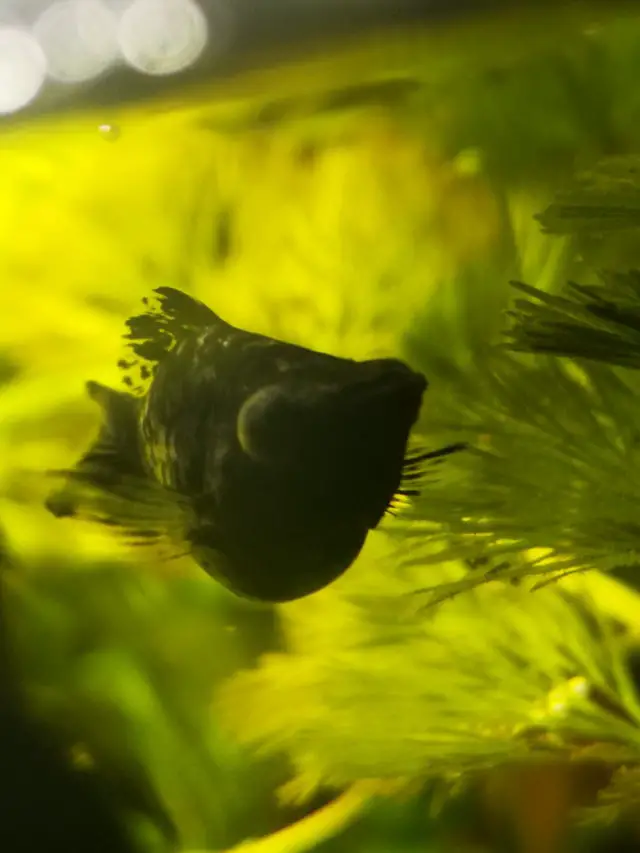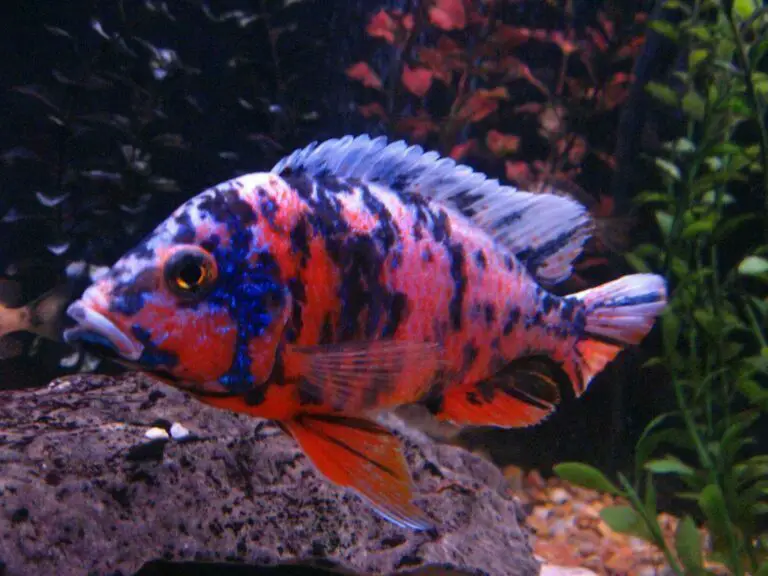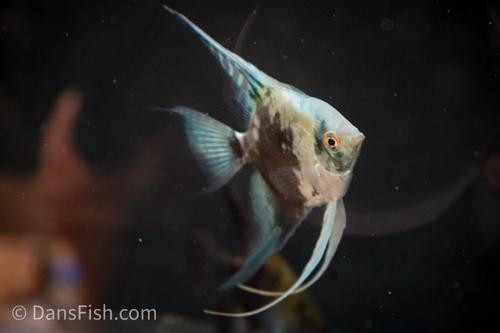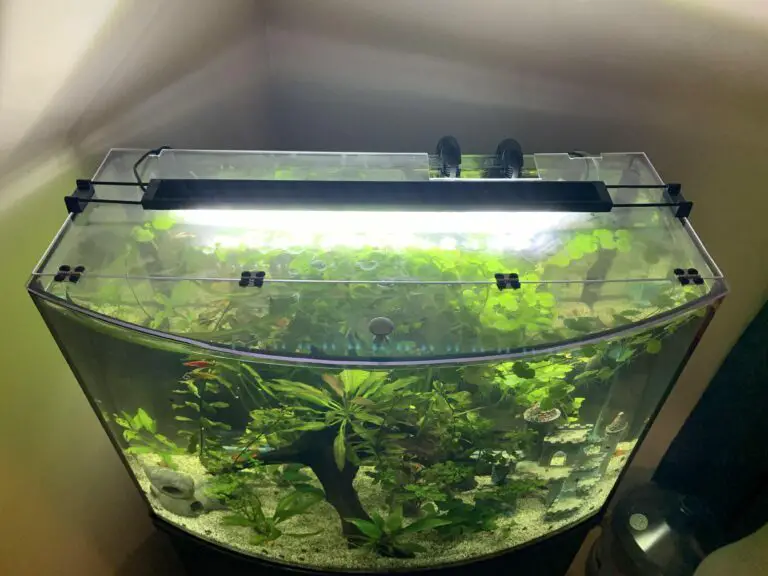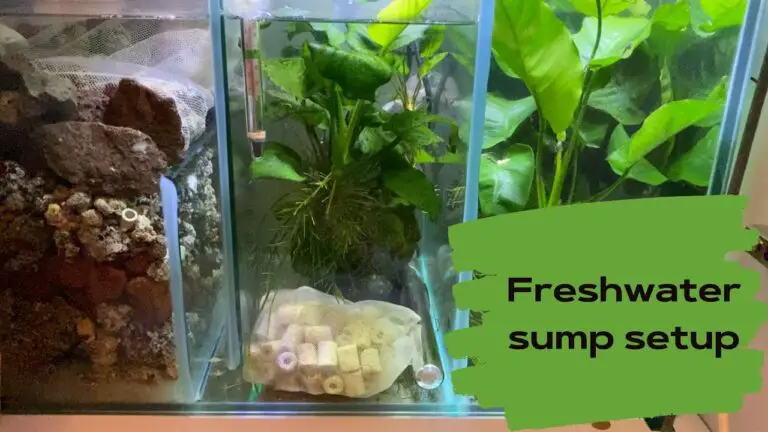Is Popeye Fish Disease Contagious: A Comprehensive Guide
Popeye fish disease, also known as exophthalmia, is a common ailment that affects many aquarium fish.
This condition is characterized by the swelling and protrusion of one or both eyes, giving the fish a “popeye” appearance.
While it can be alarming to witness, many fish owners wonder if popeye fish disease is contagious and if it poses a risk to other fish in the tank.
I will explore the contagious nature of popeye fish disease and provide valuable insights based on first-hand knowledge and credible sources.
Popeye fish disease is not contagious in itself. It is primarily caused by bacterial or parasitic infections, which are often the result of poor water quality, inadequate nutrition, or stress.
However, the underlying causes of popeye fish disease can be contagious if they are spread through the water or if infected fish are introduced into a healthy tank.
Therefore, it is essential to address the root causes of the disease to prevent its spread among the fish population.
Understanding the Causes of Popeye Fish Disease
Bacterial Infections
One of the primary causes of popeye fish disease is bacterial infections. Bacteria such as Aeromonas, Pseudomonas, and Mycobacterium can infect the eyes of fish, leading to swelling and protrusion.
These bacteria can enter the fish’s system through open wounds, poor water conditions, or contaminated food. It is crucial to maintain a clean and healthy environment for the fish to prevent bacterial infections.
Parasitic Infections
Parasites can also contribute to the development of popeye fish disease. Common parasites that affect fish include flukes, protozoa, and nematodes.
These parasites can damage the fish’s eye tissues, causing inflammation and swelling. Regular observation and treatment for parasites are necessary to prevent popeye fish disease.
Poor Water Quality
Poor water quality is a significant factor in the development of popeye fish disease. Ammonia and nitrite spikes, high nitrate levels, and improper pH can stress the fish.
And weaken their immune system, making them more susceptible to infections. Regular water testing and maintenance are essential to prevent popeye fish disease and other health issues.
Inadequate Nutrition
A balanced and nutritious diet is crucial for the overall health of aquarium fish. Poor nutrition can weaken their immune system making them more susceptible to infections and diseases like popeye fish disease.
It is essential to provide a varied diet that meets the specific nutritional needs of different fish species.
Stress
Stress can compromise the immune system of fish, making them more vulnerable to infections.
Factors such as overcrowding, aggressive tank mates, sudden changes in water parameters, and inadequate hiding spots can all contribute to stress in fish.
Creating a stress-free environment is essential to prevent popeye fish disease and promote overall fish health.

Credit: www.myaquariumclub.com
What are the symptoms of popeye fish disease?
Popeye fish disease is characterized by swollen and protruding eyes. The affected eyes may appear cloudy or discolored.
In severe cases, the eye may protrude to the point of falling out of the socket. Other symptoms may include lethargy, loss of appetite, and difficulty swimming.
Can popeye fish disease be cured?
Yes, popeye fish disease can be treated if caught early. The underlying cause of the disease, such as bacterial or parasitic infections, must be addressed.
Treatment options include antibiotic medications, salt baths, and improving water quality. It is essential to consult a veterinarian or experienced fish keeper for proper diagnosis and treatment.
Can popeye fish disease spread to other fish?
Popeye fish disease itself is not contagious. However, the underlying causes, such as bacterial or parasitic infections, can be contagious if the pathogens are spread through the water or if infected fish are introduced into a healthy tank.
It is crucial to isolate and treat infected fish promptly to prevent the spread of the disease.
How can I prevent popeye fish disease?
To prevent popeye fish disease, it is crucial to maintain a clean and healthy aquarium environment. This includes regular water testing and maintenance, providing a balanced diet, minimizing stress factors, and quarantining new fish before introducing them to the main tank.
Proper hygiene practices, such as washing hands before and after handling fish, can also help prevent the spread of pathogens.
Are there any specific fish species more prone to popeye fish disease?
While popeye fish disease can affect various fish species, certain species may be more susceptible to the condition.
For example, goldfish and betta fish are known to be more prone to popeye fish disease due to their genetic predisposition and sensitivity to poor water conditions. However, any fish can develop the disease if the underlying causes are present.
Can popeye fish disease be fatal?
If left untreated, popeye fish disease can lead to severe complications and even death. The swollen eyes can become infected, causing further damage to the fish’s health.
It is crucial to seek proper diagnosis and treatment as soon as symptoms are observed to prevent the progression of the disease.
Is Popeye Painful for Fish?
Indeed, Popeye disease can be both painful and perilous for fish. Popeye is a common condition that affects many aquarium fish.
It is caused by a bacterial infection that inflames the eye and makes it bulge out. Popeye can be very painful for fish, as it puts pressure on the eye and may impair their vision.
Popeye can also lead to blindness or eye loss if left untreated. Therefore, it is important to identify the symptoms of popeye early and treat it promptly with antibiotics and water changes.
Does Popeye Go Away?
Absolutely, Popeye disease, known scientifically as exophthalmia, can indeed be reversed with the right care and environment. The swelling of the eye, which is a hallmark of this condition, may start to decrease within a few weeks or even months.
However, any damage to the cornea might require a longer healing period. It’s worth noting that while Popeye disease itself isn’t life-threatening, it can weaken the fish’s immune system significantly.
This can leave the fish susceptible to a host of other health issues, including bacterial and fungal infections, parasitic infestations, and even internal infections. As such, early detection and appropriate treatment are key to helping the fish recover.
What is the Best Antibiotic for Popeye in Fish?
There are a couple of antibiotics that are commonly used to treat Popeye disease in fish. One of them is Maracyn Plus, which contains both minocycline and trimethoprim sulfa. These ingredients work together to quickly eliminate the bacteria associated with Popeye from your tank or aquarium.
Another antibiotic that is often used is an injectable form of tetracycline. This antibiotic inhibits bacterial growth and can be administered directly into the affected area, making it very effective in treating Popeye.
However, it’s important to note that the choice of antibiotic can depend on the specific circumstances and severity of the disease. Therefore, it’s always best to consult with a vet or a fish health professional before starting any treatment.
Popeye disease in aquarium fish
Can Popeye Kill Fish?
Popeye disease, while not directly lethal, can pave the way for severe complications that can endanger the life of a fish.
The condition weakens the fish’s immune system considerably, leaving it vulnerable to a variety of other health problems.
These can include bacterial and fungal infections, parasitic infestations, and even internal infections. If these issues are not addressed promptly, they could indeed prove fatal for the fish.
However, with timely and appropriate treatment, most fish can recover fully from Popeye disease.
How Long is Popeye Fish Disease Contagious?
Exophthalmia, commonly known as Popeye disease, is a bacterial infection that can potentially be transmitted among fish in the same habitat.
The contagious period typically lasts around a week from when symptoms first appear. However, it’s important to note that some experts suggest that Popeye disease may not be inherently contagious.
This variation in views could stem from the multiple causes of Popeye disease, which can include factors like inadequate water quality, physical injury, or an existing infection.
As a precautionary measure, it’s recommended to isolate the affected fish and consult with a fish health expert for an accurate diagnosis and treatment plan.
Pop Eye in Fish Treatment
Sure, here’s a condensed version of the treatment for Popeye disease in fish:
- Improve Water Conditions: Ensure optimal temperature, pH, and low levels of ammonia, nitrites, and nitrates.
- Isolate Affected Fish: Prevent the disease from spreading.
- Use Salt: Add salt to the water to reduce inflammation.
- Administer Antibiotics: Treat any underlying bacterial infections.
- Maintain Good Tank Hygiene: Keep the tank clean and provide a balanced diet.
Remember, it’s best to consult with a vet or a fish health professional for proper diagnosis and treatment.
Popeye in Fish Treatment With Epsom Salt
Epsom salt, also known as magnesium sulfate, is a common remedy for Popeye disease in fish. It can help alleviate swelling and discomfort associated with this condition.
For freshwater aquariums, the suggested dosage is one teaspoon of Epsom salt for every 5 gallons of water. This should be added daily until the symptoms subside. For saltwater tanks, the dosage is halved to ½ teaspoon per gallon.
However, some experts recommend using regular table salt instead of Epsom salt as it may be gentler on the fish’s sensitive eye area.
It’s crucial to isolate the affected fish in a separate tank during treatment to prevent any potential harm to other fish or plants in the aquarium.
As always, it’s recommended to seek advice from a veterinarian or a fish health expert before starting any treatment regimen.
Angel Fish Pop Eye Treatment
Sure, here’s a brief version of the treatment for Popeye disease in angelfish:
- Find the Cause: Determine the possible cause.
- Isolate the Fish: Move the angelfish to a separate tank.
- Use Antibiotics: Start broad-spectrum antibiotics treatment.
- Add Aquarium Salts: If there are eye injuries, add aquarium salts.
- Improve Water Conditions: Make partial water changes for good quality.
- Enhance Food Quality: Provide high-quality food to boost the fish’s immune system.
Always consult with a vet or a fish health professional for proper diagnosis and treatment.
Fish With Popeye Won’t Eat
Fish suffering from Popeye disease may sometimes lose their appetite. This behavioral change is often due to the discomfort and stress associated with the condition.
If your fish is refusing to eat, it’s crucial to address this issue quickly as it can further compromise the fish’s health. In some instances, you may need to resort to hand-feeding them using forceps if they’re struggling to feed themselves.
However, it’s always recommended to seek advice from a veterinarian or a fish health expert for accurate diagnosis and treatment.
Conclusion
Popeye fish disease is not contagious in itself, but the underlying causes can be if spread through the water or infected fish are introduced into a healthy tank.
Understanding the causes of the disease, such as bacterial or parasitic infections, poor water quality, inadequate nutrition, and stress, is vital for prevention and treatment.
By maintaining a clean and healthy aquarium environment and providing proper nutrition.
By minimizing stress factors, fish owners can significantly reduce the risk of popeye fish disease and promote the overall health of their aquatic pets.
